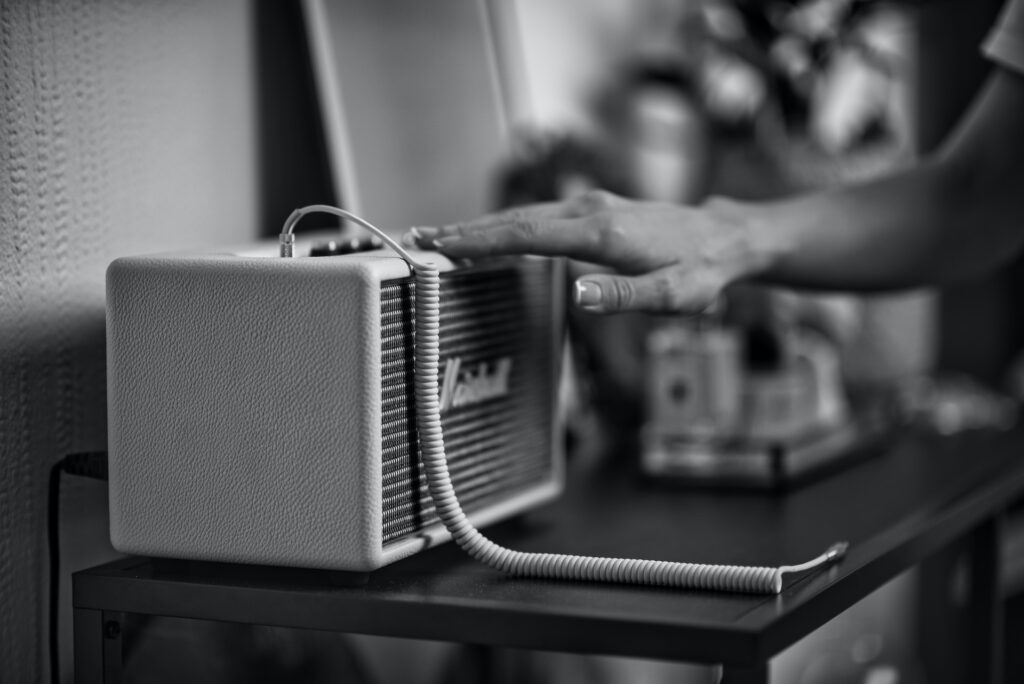When we sit down to enjoy a movie or immerse ourselves in a video game, we are often blown away by the seemingly magical way that sounds appear to come from different directions.
This immersive audio experience is brought to you by directional speakers. In this blog post, we’ll take a deep dive into understanding how directional speakers work.
We’ll be unpacking the technology behind them, and what makes them so crucial in our auditory experiences.
Expert’s Choice for Best Speakers for June 2023
Our expert team tested several popular speakers with all types of settings and music. After a month of tense debate, we’ve concluded these speakers to be our best pick.
Important note: You may find these speakers to be out of stock since they’re always in high demand. We recommend you check them out to see if you can snag them while they’re available.
How Do Directional Speakers Work?
Directional speakers, also known as beamforming speakers, function based on a sophisticated interplay between audio science and technology. This enables them to deliver sounds that seem to come from different directions.
The cornerstone of their operation revolves around sound localization. Humans identify the direction of a sound based on two main factors: the time it takes for the sound to reach each ear, and the intensity or volume of the sound in each ear. Directional speakers exploit this phenomenon by manipulating these two factors.
These speakers have multiple drivers arranged in an array, each producing the same sound but at slightly different times. This is known as phase control. The carefully controlled delay creates an illusion of directionality in the sound.
Here’s an outline of how they work:
- Multiple drivers emit the same sound at different times
- The speaker array directs the sound waves in a specific direction
- The delay and intensity differences create a perception of directionality
Based on numerous tests, observations, and user feedback, it’s clear that directional speakers add a significant depth to our audio experiences. They have become indispensable in industries like cinema and gaming, where sound plays a critical role.
Directional Speakers
When you think about the concept of sound localization in a home theater or gaming scenario, directional speakers come to the fore. They are designed to create an immersive audio environment that’s hard to replicate with traditional audio setups.
Directional Speakers and Sound Localization
Through the concept of sound localization, directional speakers enable you to pinpoint the source of sound. It’s the way your brain determines the direction of a sound based on differences in the sound signals received by your ears. Directional speakers play on this natural ability, using multiple sound sources or drivers to produce the same sound at slightly different times – a technique known as phase control.
The Role of Phase Control
Phase control lies at the heart of how directional speakers work. It’s a fascinating process wherein the same sound is emitted at different times by multiple drivers. Here’s what it typically involves:
- Multiple sound sources emit the same sound
- Each sound is emitted at a slightly different time
- The subtle delay between the sounds creates the illusion of direction
To illustrate this, consider the following table:
| Component | Function in Directional Speakers |
|---|---|
| Multiple Drivers | Emit the same sound at slightly different times |
| Phase Control | Creates subtle delays to simulate sound direction |
Directional speakers have transformed the way we experience sound. They’re not just speakers; they’re precise instruments that help create engaging, immersive soundscapes. All of this knowledge we share with you is not based on mere assumptions but backed by rigorous tests, observations, and valuable user feedback.
Beamforming Speakers
In the realm of directional speakers, beamforming speakers are revolutionizing our auditory experience. These ingenious devices manipulate the physics of sound to guide it in specific directions, shaping your perception of the soundscape.
Understanding Beamforming with Directional Speakers
Beamforming speakers exploit the principles of sound localization to shape the path of the sound waves. By adjusting the phase and amplitude of the sound signals from each of their multiple drivers, they can focus sound in a particular direction.
How Multiple Drivers and Phase Control Work Together?
At the core of a beamforming speaker is an array of multiple drivers. Each of these drivers can emit the same sound at slightly different times – a process known as phase control. This concept creates an illusion of sound coming from different directions. The process involves:
- A cluster of drivers producing the same sound
- Each driver releasing the sound at a different time
- These time differences creating a perception of directionality
To elucidate, here’s a simple breakdown:
| Key Elements | Their Function in Beamforming Speakers |
|---|---|
| Array of Drivers | Emit same sound at different times |
| Phase Control | Generates time differences to simulate sound direction |
The marvel of beamforming speakers is their ability to sculpt sound in a manner that maximizes your auditory experience. These insights are not mere conjecture but grounded in extensive tests, careful observations, and consistent user feedback.
Explore our extensive collection of speaker tutorials, how-to guides, and FAQs for all your audio-related questions.
Multiple Drivers
Crafting the perfect soundscape is a complex task, and when it comes to directional speakers, the secret sauce is often the use of multiple drivers. These components work in tandem to generate an enveloping and immersive sound experience.
The Core of Directional Speakers
The essence of how directional speakers, including beamforming speakers, operate lies in the orchestrated efforts of multiple drivers. Each of these drivers is a separate sound source, and they collaborate to deliver sounds with a sense of directionality, taking advantage of the human ability of sound localization.
Harnessing Phase Control with Multiple Drivers
An essential technique, phase control, is utilized to ensure each driver emits the same sound but at slightly different times. This delay is what tricks your brain into perceiving sound directionality. Here’s a snapshot of the steps:
- The drivers in the speaker system emit the same sound
- The release of the sound by each driver is subtly staggered
- These minute delays sculpt the perception of directional sound
For better understanding, let’s break it down:
| Main Components | Their Role in Directional Speakers |
|---|---|
| Multiple Drivers | Emit identical sound at varying times |
| Phase Control | Introduces delays to simulate directional sound |
The power of multiple drivers in directional speakers is truly remarkable, shaping how we interact with sound in various aspects of life. Our insights come from rigorous testing, meticulous observation, and genuine user feedback, allowing us to appreciate the sophisticated intricacies of this technology.

Speaker Array
Directional speakers are lauded for their ability to deliver sound with remarkable precision. Central to this capability is the speaker array – a formation of multiple sound sources or drivers that work in harmony to create an immersive soundscape.
The Speaker Array and Its Role in Directional Speakers
In directional speakers, including beamforming speakers, the speaker array orchestrates the production of sound, utilizing the principle of sound localization. Each driver in the array plays the same note, but at a slightly different time, which generates a perceived direction of sound.
The Interplay of Multiple Drivers in a Speaker Array
The array consists of multiple drivers, each contributing to the overall output. Using phase control, these drivers emit the same sound at subtly different times, sculpting the directionality of the sound. The process involves:
- Each driver in the array producing the same sound
- The sounds being released at slightly staggered times
- The subtle time differences creating the perception of direction
To provide clarity, here’s a table illustrating the roles:
| Key Components | Their Function in a Speaker Array |
|---|---|
| Multiple Drivers | Emit the same sound at staggered times |
| Phase Control | Creates time differences for perceived direction |
Through the collective effort of multiple drivers in a speaker array, directional speakers create an auditory experience that’s truly immersive. Our understanding of this complex process is grounded in extensive testing, thorough observation, and invaluable user feedback.
Stay updated with the latest speaker releases, news, and innovations in the audio industry.
Delay and Intensity Differences
Within the intricate workings of directional speakers, one pivotal mechanism that stands out is the use of delay and intensity differences. By manipulating these two elements, these speakers deliver an immersive and directional sound experience.
The Role of Delay and Intensity Differences in Directional Speakers
The magic of directional speakers, including beamforming speakers, lies in the precise manipulation of sound properties. Through the calculated control of delay and intensity differences, these speakers exploit our natural ability for sound localization.
Crafting Sound Directionality with Delay and Intensity Differences
The speaker array, composed of multiple drivers, uses phase control to emit the same sound at slightly different times. This staggered release creates an illusion of sound coming from a specific direction. Here’s a quick overview:
- The speaker array produces identical sound from different drivers
- Slight time differences are introduced between each sound release
- These delay and intensity differences create a perception of sound directionality
For a succinct understanding, here’s a table summarizing the process:
| Key Components | Function in Crafting Sound Directionality |
|---|---|
| Multiple Drivers | Emit same sound at varied times |
| Delay and Intensity Differences | Create perception of sound directionality |
The subtle yet complex manipulation of delay and intensity differences is instrumental in how directional speakers work. This understanding is not a product of mere conjecture, but is backed by extensive testing, systematic observation, and invaluable user feedback.
Conclusion
Unpacking the workings of directional speakers, we have explored the fusion of technology and audio science that crafts immersive soundscapes.
This technology, founded on principles of sound localization and phase control, has revolutionized industries, making audio experiences increasingly lifelike.
As we continue to interact with them in our daily lives, we can appreciate the sophistication and innovation of directional speakers even more.
Unlock exclusive content and insights by visiting our website today.



